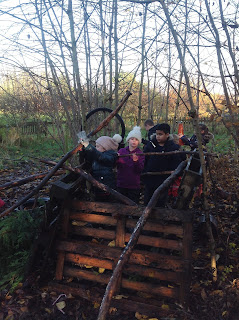In 3V this half term, we are learning all about rocks and soils. We have been looking at the three different ways in which rocks are formed.
Igneous rocks are formed deep underground, where the temperature is extremely hot. Pockets of magma (molten rock) form under the earth's surface. When these cool and solidify, igneous rock is formed.
Sedimentary rock usually forms under the sea. Layers of dust and grit become compacted over many thousands of years, eventually solidifying to create sedimentary rock.
Metamorphic rock is created when heat and pressure affect an existing rock to such an extent that its structure changes, creating a new type of rock.
We recreated these different processes using a very popular ingredient... chocolate!
First, we broke a bar of delicious chocolate into pieces. Mrs Miller took it away to melt it carefully in the microwave. This would be our igneous rock!
Meanwhile, we layered several different chocolates and sweets in a baking dish. These represented our sedimentary rock. After the melted chocolate had been cooled and crumbled in (representing the erosion process that takes place over hundreds of years), it was taken away again to be heated in the oven. The heat from the oven represented the metamorphic process.
Once the dish was cool enough to handle safely, it was brought back into the classroom, where we looked at the changes that had occurred to our chocolate rock.
Finally, Mrs Vaqueiro broke the chocolate rock into bite-sized pieces for us to enjoy!
It was a delicious way to start the week!






























































